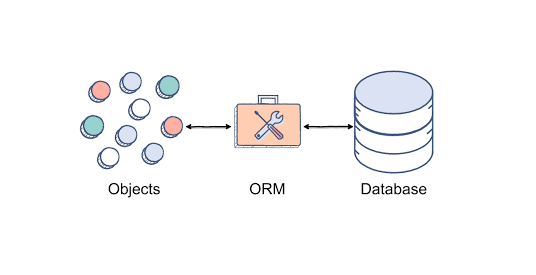In the world of software development, interacting with databases can be a daunting task. That’s where Object-Relational Mapping (ORM) comes in a powerful technique that simplifies database management by bridging the gap between objects and relational databases.
What is an ORM?
An ORM is a programming technique that allows you to interact with a database using objects, rather than writing raw SQL code. It provides a layer of abstraction between your application code and the database, making it easier to work with data.
Think of an ORM like a translator. Just as a translator helps people who speak different languages communicate, an ORM helps your application code communicate with the database.
How Does an ORM Work?
An ORM works by mapping objects in your application code to tables in the database. It then uses this mapping to generate SQL queries, perform data validation, and manage transactions.

Here’s an example of how an ORM might work:
- You define a class in your application code that represents a table in the database.
- The ORM maps the class to the table, creating a bridge between the two.
- You use the class to interact with the database, creating, reading, updating, and deleting data as needed.
- The ORM generates the necessary SQL queries to perform the desired action.
Benefits of Using an ORM
Improved productivity:
- ORMs save you time and effort by automating database interactions.
Better data modeling:
- ORMs enable you to model data using objects, making it easier to understand and work with complex data relationships.
Portability:
- ORMs make it easier to switch between different databases, reducing vendor lock-in.
Security:
- ORMs provide an additional layer of security by shielding your application from SQL injection attacks.
Top ORM Tools
Here are some of the top ORM tools available:
Entity Framework:
- A popular ORM for .NET developers, providing a high-level abstraction over the database.
Hibernate:
- A widely-used ORM for Java developers, offering advanced features like caching and transaction management.
Django ORM:
- A built-in ORM for Django developers, providing a simple and intuitive way to interact with databases.
SQLAlchemy:
- A SQL toolkit and ORM for Python developers, offering a high degree of flexibility and customization.
TypeORM:
- A TypeScript/JavaScript ORM, providing a high-level abstraction over the database and support for advanced features like caching and transactions.
Real-World Applications of ORMs
ORMs are used in a wide range of applications, including:
- Web applications: ORMs are often used in web development to interact with databases and retrieve data for web pages.
- Mobile applications: ORMs are used in mobile app development to interact with databases and retrieve data for mobile apps.
- Enterprise software: ORMs are used in enterprise software development to interact with large databases and retrieve data for business intelligence and reporting.
Common Mistakes to Avoid
Here are some common mistakes to avoid when using an ORM:
- Not using transactions: Failing to use transactions can lead to data inconsistencies and errors.
- Not using relationships: Failing to use relationships can lead to data inconsistencies and errors.
- Not using a consistent naming convention: Failing to use a consistent naming convention can make it harder to work with your ORM.
Final Thoughts
Object-Relational Mapping is a powerful technique that simplifies database management by bridging the gap between objects and relational databases. By using an ORM, you can improve your productivity, data modeling, portability, and security. Whether you’re a seasoned developer or just starting out, an ORM can help you work more efficiently and effectively with your database.
